Beisler 1265-5 Operating instructions
- Category
- Sewing machines
- Type
- Operating instructions

DA_650-16_deen_05-2012.qxd:DA-6-pages.qxd 23.05.2012 10:05 Uhr Seite 3
Operation Instructions
DA_650-16_deen_05-2012.qxd:DA-6-pages.qxd 23.05.2012 10:05 Uhr Seite 3
Operation Instructions
1282265-5 2821265-5


Index Page:
Preface and general safety instructions
Part 1: Operating instructions cl. 1265/5
1 Description of product .......................................... 3
1.1 Description of proper use ......................................... 3
1.2 Briefdescription............................................... 3
1.3 Technicaldata................................................ 4
2 Optional equipment (see annex) .................................... 5
3 Sw itching on - Switching off - Program stop ............................ 6
3.1 Switchingon................................................. 6
3.2 Switchingoff................................................. 6
3.3 Programstop ................................................ 7
3.4 Restartafterprogramstop ........................................ 7
4 Operation of the sew ing machine head ............................... 8
4.1 General notes
......................................................... 8
4.2 Recommended threads .......................................... 9
4.3 Removing / Putting on the fabric sliding sheet............................. 10
5 Operation of the sew ing unit ...................................... 11
5.1 Foot switch machine sequence...................................... 11
5.2 Feeding the trousers parts and starting the sewing operation ................... 11
5.3 Adjusting the edge guide ......................................... 13
5.4 Adjustingtheblowingairforthenozzlesinthetabletop ...................... 14
5.5 Stackers ................................................... 15
5.5.1 Standard stacker .............................................. 15
5.5.2 Throw-overstacker............................................. 16
5.5.3 Alternatingstacker............................................. 17
5.6 Fusing station (optional) .......................................... 18
5.6.1 Inserting adhesive tape .......................................... 18
5.6.2 Switchingthefusingstationonandoff................................. 18
5.6.3 Fusingofkneeliningandfronttrousers................................. 19
5.6.4 Cleningthestamp.............................................. 20
5 .7 Feeding the trousers parts and starting the s ewing operation in conjunction with the fusing station 2 1
6 Operation of the control ......................................... 23
6.1 Operatorterminal.............................................. 23
6.2 Userinterface................................................ 24
6.2.1 Menustructureofthesewingandsettingprograms......................... 24
6.3 Mainscreen................................................. 26

Index Page:
6.4 Seamprograms............................................... 27
6.4.1 Factory-setprograms ........................................... 27
6.4.2 Selectingtheseamprogram ....................................... 28
6.4.3 Manual sewing, controlled via foot pedal ................................ 28
6.4.4 Changing the program functions ..................................... 29
6.5 Seam sequences .............................................. 43
6.6 Preseams................................................... 45
6.7 Seamstartingmode ............................................ 46
6.8 Activatingthesewingmotor........................................ 46
6.9 Resetting the daily piece counter .................................... 46
6.10 Input/ Output test .............................................. 47
6.11 Programming menus ............................................ 49
6.11.1 General notes ................................................ 49
6.11.2 Allocatingafreestoragelocation .................................... 49
6.11.3 F1=INITParameter............................................ 49
6.11.4 F2=MemoryCard............................................. 51
6.11.5 F3 = D iagnostics .............................................. 53
6.11.6 F5 = Additional programs ......................................... 54
7 Maintenance ................................................ 56
7.1 Cleaning and checking........................................... 56
7.2 Oillubrication................................................ 58

1 Description of product
1.1 Description of proper use
The 1265/5 is a sewing unit which can properly be used for sewing
light to medium-weight material. Such material is, as a rule, made of
textile fibres. These materials are used in the garment industry.
In general only dry material must be sewn on this machine. The
material must not contain any hard objects.
The seam is generally made with core thread, polyester fibre
or cotton threads.
The dimensions for needle and hook threads can be taken from the
table in chapter 4.2.
Before using any other threads it is necessary to estimate the
consequential dangers and to take the respective safety measures, if
required.
This sewing unit must only be installed and operated in dry and
well-kept rooms. If the sewing unit is used in other rooms, which are
not dry and well-kept, further measures to be agreed upon may
become necessary (see EN 60204-31 : 1999).
We, as manufacturer of industrial sewing machines, assume that at
least semi-skilled operating personnel will be working on our products
so that all usual operations and, where applicable, their risks are
presumed to be known.
1.2 Brief description
The Beisler 1265/5 is a single-head sewing unit for serging of trousers
parts with and without knee lining. The overlocking of the seat and fly
bow as well as of the trousers hem can be integrated.
Optionally you can work with or without a hot fusing station (lining on
top / lining below).
All sewing unit components are mounted on a stand welded of square
steel tubes and controlled by a microprocessor system.
The sewing unit is operated via a control panel. Here it is possible to
call up various control programs, to define new programs and to check
all inputs and outputs for maintenance and repair purposes.
Machine head
–
Pegasus two- or three-thread overlock machine
EXT 5204-02 with top feed
–
Separate step motor control for top feed and differential feed, for
setting the desired lining fullness, also for stretch fabrics
–
Microprocessor control, freely programmable
–
Sewing drive Efka DC 1500
–
Automatic fullness distribution at the side seam and crotch seam,
programmable
–
Height-adjustable edge guide for different material thicknesses
–
Automatic contour guide, controlled via step motor
–
Ejector via step motor for precise chain separating and positioning
the trousers before stacking
3

–
Step motor control with auxiliary feed for wide and difficult
materials
–
Processing of knee lining without fusing device for cut-to-size knee
lining
–
Optional fusing unit
–
Light barrier for recognizing the seam beginning and seam end for
automatic sewing start and stop
–
Vertical cutter with suction for overlocking and serging in one
operation
–
Chain separating device with suction, programmable
–
Adjustable blowing nozzles in the table top for supporting the
material feed
–
Height-adjustable stand, infinitely variable from 850 mm to
1200 mm
–
Integrated stacking device
1.3 Technical data
Machine head: Pegasus EXT 5204-02
Stitch type: 504/ 505
Number of needles: 1
Needle system: B27
Needle size: Nm 80 to Nm110
Threads: see table chapter 4.2
Speed: 7000 r/ min without lining
6500 r/min w ith lining
Speed upon
delivery: 6500 r/ min
Stitch length: min. 1.0 mm
max. 5.0 mm
Seam width: 6 mm
Material: Light to medium-weight material
Operating pressure: 6 bar
Air consumption: 20 NL per working cycle
Rated voltage: 1 x 230 V 50/60 Hz
Rated load: 0.9 kVA
Dimensions: 1500 x 900 x 1400 mm (L x W x H)
Working height: 850...1200 mm
(upper table top edge)
Weight: 120 kg
4

5
Noise value: LC = 81dB (A)
Workstation-specific emission value according to DIN 45635-48-B-1
Stitch length: 3 mm
Seam length: 1160 mm
Speed: 7000 r/min
Material G1 DIN 23328: 1 layer
Measuring point according
to DIN 4895 part 1 X = 600 mm Y = 350 mm Z = 600 mm
X-a x is = at right angles to the feeding direction
Y-axis = main feeding direction
Z-axis = height
2 Optional equipment
See annex.

3 Switching on - Switching off - Program stop
3.1 Switching on
–
Switch on main switch 1 (turn in clockwise direction).
The control loads the machine program.
The start screen appears in the display of the control panel and
shows the following message:
WAITING FOR RESET
–
Unlock the program stop key 2 at the control panel.
3.2 Switching off
–
Press program stop key 2 at the control panel until it locks.
–
Switch off main switch 1 (turn counter-clockwise).
6
21

3.3 Program stop
For an immediate stop in case of operating errors, needle breakage
etc. the safety system of the 1265/5 provides the following measures:
–
Press program stop switch 2 at the control panel.
The running operations are stopped immediately.
–
Turn main switch 1 counter-clockwise.
The sewing unit drops out immediately;
all movements of the sewing unit stop immediately.
3.4 Restart after program stop
Caution: Risk of injury!
Switchthemainswitchoff.
Clear the fault only with the sewing unit switched off.
Only restart the sewing unit after the fault has been cleared.
–
Switch on main switch 1 (turn in clockwise direction).
–
Unlock the program stop switch.
The control loads the machine program.
The main screen appears in the display of the control panel.
The sewing unit is ready for operation again.
7
21
2

4 Operation of the sewing machine head
4.1 General notes
The operation of the sewing machine head (needle insertion, threading
of needle thread and hook thread etc.) is described in the separately
attached Pegasus operating instructions.
The instruction manual is included in the accessories of the sewing
unit.
Attention: Risk of injury!
Please read the operating instructions of the sewing machine head
carefully and observe all safety instructions.
8

4.2 Recommended threads
Needle system: B27
Recommended
needle size: Nm 80 for very thin material
Nm 90 for thin material
Nm 100 for medium-weight material
High sewing security and good sewability are achieved with the
following core threads:
–
Two-ply polyester endless polyester core-spun
(e.g. Epic Poly-Poly, R asant x, Saba C, ...)
–
Two-ply polyester endless cotton core-spun
(e.g. Frikka, Koban, Rasant, ...)
If these threads are not available, the polyester fibre or cotton threads
listed in the table can also be sewn.
Often two-ply core threads are offered by the thread manufacturers
with the same designation as three-ply polyester fibre threads
(3cyl.-spun).This causes uncertainty with regard to twisting and thread
thickness.
When in doubt, unravel the thread and check whether it is twisted 2- or
3-ply.
The label no. 120 on the thread reel of a core thread corresponds e.g.
to the thread size Nm 80/2 (see table values in brackets).
In case of monofilament threads you can use needle threads and hook
threads of the same thickness. The best results are achieved with soft
and elastic threads (software) of the thread thickness 130 Denier.
Recommended thread thicknesses:
Needle size Core thread Core thread
Nm
Needle thread Hook thread Needle thread Hook thread
Polyester Polyester Polyester Cotton
endless core-spun endless core-spun
Label No. Label No. Label No. Label No.
80
90 120 (Nm 80/2) 120 (Nm 80/2) 120 (Nm 80/2) 120 (Nm 80/2)
100 100 (Nm 65/2) 100 (Nm 65/2) 100 (Nm 65/2) 100 (Nm 65/2)
Needle size Polyester fibre thread Cotton thread
Nm (3cyl.-spun)
Needle thread Hook thread Needle thread Hook thread
80 Nm 120/3 Nm 120/3 Ne
B
60/3-80/3 Ne
B
60/3-80/3
90 Nm 80/3-120/3 Nm 80/3-120/3 Ne
B
50/3-70/3 Ne
B
50/3-70/3
100 Nm 70/3-100/3 Nm 70/3-100/3 Ne
B
40/3-60/3 Ne
B
40/3-60/3
9

4.3 Removing / Putting on the fabric sliding sheet
The fabric sliding sheet 2 is held in the gap of the table top by the
magnets 1.
The edge guide 3 is fastened on the fabric sliding sheet.
Removing the fabric sliding sheet
–
Carefully remove the fabric sliding sheet 2 from the magnets in
upward direction.
–
Remove the fabric sliding sheet 2 sidewards.
The lower section of the sewing machine head is accessible now.
Putting on the fabric sliding sheet
–
Push the fabric sliding sheet 2 into the gap of the table top and
insert it in downward direction.
10
23 1
23

5 Operation of the sewing unit
5.1 Foot switch machine sequence
In some sewing programs the foot switch serves for starting various
functions.
The foot switch is equipped with two contacts.
One contact is located in the rear area and is released by stepping
back.
The other one is located in the front area and is released by
mechanical load.
5.2 Feeding the trousers parts and starting the sewing operation
The overlock unit 1265/5 works semi-automatically.
The operator of the sewing unit has to proceed as follows:
l call up the desired seam program
l feed the material accurately
l supervise the sewing process
l remove the finished parts from the stacker
Feeding the trousers part and starting the sew ing operation
1) Select the seam program at the control panel (see chapter 6.4.2).
2) Place the trousers part 1 on the table top 3 from the right and
position it precisely underneath the contour guide 2.
ATTENTION!
As soon as the trousers part is pushed underneath the light barrier 4,
the sewing operation starts automatically and the contour guide 2
lowers.
11
32 1
42

3) The trousers part is sewn.
4) The puller 5 lowers, too, and supports the feeding of the trousers
par t.
5) As soon as the material has passed the light barrier, the seam is
finished and the ejector 6 lowers.
6) The contour guide 2 and the puller 5 move upwards.
7) The ejector 6 transports the material out of the sewing area.
8) The stacker clamp 8 moves to the front.
9) The ejector 6 moves upwards again.
10) The trousers part is stacked.
11) Actuate foot switch 7 for removing the workpieces.
Note
In order to facilitate the material feed in the area of the sewing head
the table blowing and the ejector 6 c an be engaged at the seam
beginning.
(see chapter 5.4)
12
652
87

5.3 Adjusting the edge guide
The height-adjustable edge guide ensures a precise positioning of the
trousers part in front of the sewing head. The height of the edge guide
can be adjusted depending on the thickness of the material to be
processed.
The draw roll 4 guarantees a precise material feed under the sewing
foot.
Adjusting the height of the edge guide
–
Draw the dial 1 in the direction of arrow.
–
Set the dial 1 to one of the four lock-in positions.
Position 1 = minimum height
Position 4 = maximum height
Fine adjustment of the height of the edge guide
–
Turn the dial 2 correspondingly.
Setting the contact pressure of the roller 4
–
Turn the dial 3 in clockwise direction.
The contact pressure of the roller is reduced.
–
Turn the dial 3 counter-clockwise.
The contact pressure of the roller is increased.
13
43
1
2

5.4 Adjusting the blowing air for the nozzles in the table top
The blast nozzles 1 in the table top support the precise stacking of the
workpieces.
–
Set the intensity of the air blast with the dial 2 at the control panel.
Turn dial to the right = increased intensity of air blast
Turn dial to the left = reduced intensity of air blast
14
2
1

5.5 Stackers
5.5.1 Standard stacker
On the standard stacker the finished workpieces are bundled.
As soon as the balance point of the trousers part has been pushed
beyond the table top edge 2 by the ejector 1, the shield 4 of the stacker
extends and presses the trousers part against the front bundle bar 5.
The blowing device 1 of the stacker blows the trousers part on the
stacker over the two bundle bars 5 and 6.
The stacker is activated by a control pulse. The pneumatic functions
can be taken from the pneumatic wiring diagram.
Caution: Risk of injury!
Do not reach into the working area of the standard s tacker during the
stacking operation.
Manual stacking
–
Press key F7 at the control panel.
A stacking process is carried out.
15
F7
65 4 32 1

5.5.2 Throw-over stacker
The finished workpieces are stacked on the throw-over stacker 2.
The stacked and clamped workpieces can be removed by actuating the
foot switch 1.
The stacker is activated by a control pulse. The pneumatic functions
can be taken from the pneumatic wiring diagram.
Caution: Risk of injury!
Do not reach into the working area of the throw-over stacker during the
stacking operation.
Manual stacking
–
Press key F7 at the control panel.
A stacking process is carried out.
Removing stacked parts
–
Actuate foot switch 1 and keep it actuated.
–
Removethestackedparts.
16
F7
21

5.5.3 Alternating stacker
On the alternating stacker the right and left finished workpieces are
stacked separately.
For this purpose the table 7 of the stacker is moved from one side to
the other after every sewing operation.
As soon as the balance point of the trousers part has been pushed
beyond the table top edge 1 by the ejector 5, the shield 2 of the stacker
extends and presses the trousers part against the front bundle bar 3.
The ejector 6 and the blowing device at the shield 2 position the
trousers part accurately over the two bundle bars 3 and 4.
The stacker is activated by a control pulse. The pneumatic functions
can be taken from the pneumatic wiring diagram.
Caution: Risk of injury!
Do not reach into the working area of the alternating stacker during the
stacking operation.
Manual stacking
–
Press key F7 at the control panel.
A stacking process is carried out.
17
7
6543 2 1
F7

5.6 Fusing station (optional)
5.6.1 Inserting adhesive tape
–
Remove the right supporting disk by pulling the handle 1 strongly.
–
Insert a new roll of adhesive tape 2.
The full roll must rotate counter-clockwise when unwinding.
–
Push the right supporting disk with handle 1 on the shaft again until
it catches.
–
Guide the adhesive tape through guide 3.
–
Open flap 4 upwards.
–
Separate the adhesive tape 2 from the carrier material 5.
–
Guide the adhesive tape 2 under the flap 4 and draw it under the
clamp 7.
–
Guide the carrier material 5 downwards behind the transport roller 6.
–
Closeflap4.
5.6.2 Switching the fusing station on and off
–
The yellow signal lamp 1 “Power” lights up after the main switch
has been switched on.
–
Press the toggle switch 2 in position “ON”.
Note
As long as the signal lamp 3 “Heat” flashes, the lower stamp is being
heated up and has not yet reached the necessary temperature.
18
76 542
432 1
Page is loading ...
Page is loading ...
Page is loading ...
Page is loading ...
Page is loading ...
Page is loading ...
Page is loading ...
Page is loading ...
Page is loading ...
Page is loading ...
Page is loading ...
Page is loading ...
Page is loading ...
Page is loading ...
Page is loading ...
Page is loading ...
Page is loading ...
Page is loading ...
Page is loading ...
Page is loading ...
Page is loading ...
Page is loading ...
Page is loading ...
Page is loading ...
Page is loading ...
Page is loading ...
Page is loading ...
Page is loading ...
Page is loading ...
Page is loading ...
Page is loading ...
Page is loading ...
Page is loading ...
Page is loading ...
Page is loading ...
Page is loading ...
Page is loading ...
Page is loading ...
Page is loading ...
Page is loading ...
Page is loading ...
Page is loading ...
Page is loading ...
Page is loading ...
Page is loading ...
Page is loading ...
Page is loading ...
Page is loading ...
Page is loading ...
Page is loading ...
Page is loading ...
Page is loading ...
Page is loading ...
Page is loading ...
Page is loading ...
Page is loading ...
Page is loading ...
Page is loading ...
Page is loading ...
Page is loading ...
Page is loading ...
Page is loading ...
Page is loading ...
Page is loading ...
Page is loading ...
Page is loading ...
Page is loading ...
Page is loading ...
Page is loading ...
Page is loading ...
Page is loading ...
Page is loading ...
Page is loading ...
Page is loading ...
Page is loading ...
Page is loading ...
Page is loading ...
Page is loading ...
Page is loading ...
Page is loading ...
Page is loading ...
Page is loading ...
Page is loading ...
Page is loading ...
Page is loading ...
Page is loading ...
Page is loading ...
Page is loading ...
Page is loading ...
Page is loading ...
Page is loading ...
Page is loading ...
-
 1
1
-
 2
2
-
 3
3
-
 4
4
-
 5
5
-
 6
6
-
 7
7
-
 8
8
-
 9
9
-
 10
10
-
 11
11
-
 12
12
-
 13
13
-
 14
14
-
 15
15
-
 16
16
-
 17
17
-
 18
18
-
 19
19
-
 20
20
-
 21
21
-
 22
22
-
 23
23
-
 24
24
-
 25
25
-
 26
26
-
 27
27
-
 28
28
-
 29
29
-
 30
30
-
 31
31
-
 32
32
-
 33
33
-
 34
34
-
 35
35
-
 36
36
-
 37
37
-
 38
38
-
 39
39
-
 40
40
-
 41
41
-
 42
42
-
 43
43
-
 44
44
-
 45
45
-
 46
46
-
 47
47
-
 48
48
-
 49
49
-
 50
50
-
 51
51
-
 52
52
-
 53
53
-
 54
54
-
 55
55
-
 56
56
-
 57
57
-
 58
58
-
 59
59
-
 60
60
-
 61
61
-
 62
62
-
 63
63
-
 64
64
-
 65
65
-
 66
66
-
 67
67
-
 68
68
-
 69
69
-
 70
70
-
 71
71
-
 72
72
-
 73
73
-
 74
74
-
 75
75
-
 76
76
-
 77
77
-
 78
78
-
 79
79
-
 80
80
-
 81
81
-
 82
82
-
 83
83
-
 84
84
-
 85
85
-
 86
86
-
 87
87
-
 88
88
-
 89
89
-
 90
90
-
 91
91
-
 92
92
-
 93
93
-
 94
94
-
 95
95
-
 96
96
-
 97
97
-
 98
98
-
 99
99
-
 100
100
-
 101
101
-
 102
102
-
 103
103
-
 104
104
-
 105
105
-
 106
106
-
 107
107
-
 108
108
-
 109
109
-
 110
110
-
 111
111
-
 112
112
Beisler 1265-5 Operating instructions
- Category
- Sewing machines
- Type
- Operating instructions
Ask a question and I''ll find the answer in the document
Finding information in a document is now easier with AI
Related papers
-
Beisler 1281/5 Operating Instructions Manual
-
Beisler 1225/5 Operating Instructions Manual
-
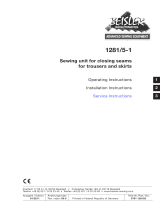 Duerkopp Adler 1281/5-1 User manual
Duerkopp Adler 1281/5-1 User manual
-
Beisler 1280-5 Owner's manual
-
Beisler 1265-4 Working Instructions
-
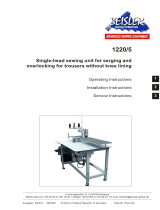 Duerkopp Adler Beisler 1220-5 Owner's manual
Duerkopp Adler Beisler 1220-5 Owner's manual
-
Beisler 100-69 Owner's manual
-
Beisler 1265-5 Operating Instructions Manual
-
Beisler 100-68 Owner's manual
-
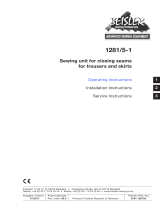 Duerkopp Adler 1281/5-1 Operating instructions
Duerkopp Adler 1281/5-1 Operating instructions
Other documents
-
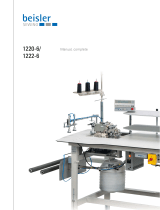 Duerkopp Adler 1222-6 Operating instructions
Duerkopp Adler 1222-6 Operating instructions
-
 Duerkopp Adler 1225-5 Operating instructions
Duerkopp Adler 1225-5 Operating instructions
-
Brodit 535481 Installation guide
-
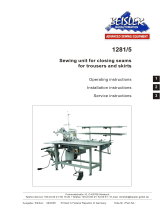 Duerkopp Adler 1281-5 Owner's manual
Duerkopp Adler 1281-5 Owner's manual
-
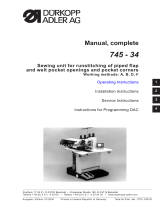 Duerkopp Adler 745-34 Owner's manual
Duerkopp Adler 745-34 Owner's manual
-
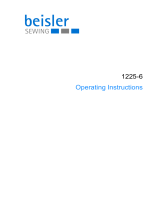 Duerkopp Adler 1225-6 Operating instructions
Duerkopp Adler 1225-6 Operating instructions
-
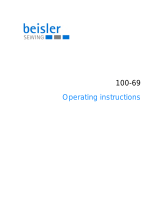 Duerkopp Adler 100-69 Operating instructions
Duerkopp Adler 100-69 Operating instructions
-
 Duerkopp Adler 745-34-1/-3 Operating instructions
Duerkopp Adler 745-34-1/-3 Operating instructions
-
Adler 745-34-2 Operating instructions
-
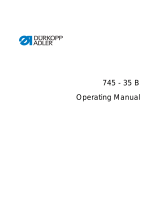 Duerkopp Adler 745-35 Operating instructions
Duerkopp Adler 745-35 Operating instructions


























































































































